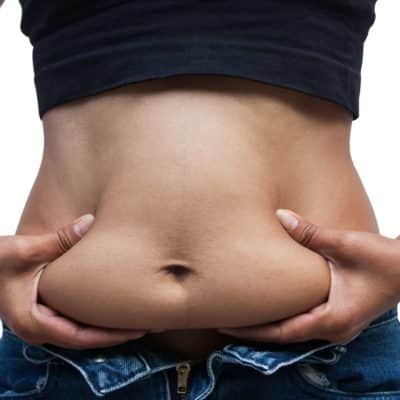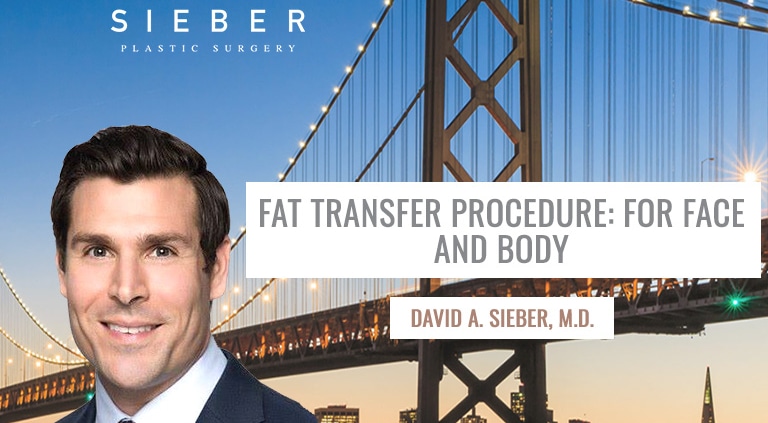Fat Transfer Procedure: For Face and Body
Fat transfer, also called fat injection or fat grafting, is a surgical procedure where a doctor transfers fat from one area of your body to the other. The surgical goal is to augment, or improve, the area where the doctor injects the fat. The procedure involves using liposuction to extract adipose fat, processing the fat, and then turning around and reinjecting purified fat into the desired area.
Fat transfer is a fairly new procedure that’s growing each year in popularity, due to the natural, beautiful results it produces as well as the various benefits it offers. You have fat cells located everywhere on your body, but it’s not always where you want it for beautiful contours and curves.
Individuals who are not happy with the contour and volume of their face, breasts, buttocks, hips or abdomen can have the doctor transfer their own fat to these areas and improve the appearance of both areas.
Fat transfer is appealing to a wide audience, since the procedure itself is minimally invasive and versatile. The doctor can use fat transfer to:
- Fill in lost face volume
- Smooth out depressions in the breasts or stomach caused by previous surgery or trauma
- Enhance the shape and size of the buttocks to use in Brazilian butt lift
Areas Fat Transfer Are Commonly Used
Common areas used for harvesting fat include the hips, abdomen and thighs. These are considered “problem areas” for many individuals and frequently have plentiful fat pockets. By having these areas harvested, problem areas are reduced and contour is improved.
Patients also have fat injections on other areas, such as the hands, face, breast and buttocks. For instance, facial fat grafting can improve lost volume in your lips, cheeks, eye area, jawline, and temples. Facial fat graphing can be performed in two hours in an outpatient setting. Hand rejuvenation through fat grafting involves removing some of fat from a part of your body where it is in excess to transfer it to the back of the hand to replace lost volume.
Fat transfer has also become an emerging breast reconstruction technique. The technique uses your own adipose tissue as opposed to an implant to reconstruct the breast.
Since the 1990’s, plastic surgeons have been using fat grafting reliably to enhance and improve the cosmetic appearance of the:
- Hands
- Face
- Hips
- Breast Fat Transfer
- Buttocks
But, more recently, doctors have documented fat grafting’s therapeutic benefits in the healing of scars and wounds and fat’s ability to repair damage to breast tissue after radiation therapy.
History of Fat Grafting
The first fat transfer surgery dates back to1893 when Gustav Neuber, a German plastic surgeon transferred fat to the eye region from the arm to correct scars that were formed from bone infection (osteomyelitis).
Despite a long clinical use history and the evolution of fat grafts method, no consensus exists on the best method and longevity of results, however, the principles of fat grafts are formed on optimum recipient-site vascularity for enhanced fat survival.
How the Fat Transfer Is Performed
The doctor harvests fat from one area of your body, washes and purifies it and then reinjects it carefully with specially made needles into the areas needing augmentation. It might be necessary to have the procedure repeated a few times to achieve your desired result. Fat transfer is basically explained in a 3-stage process:
- Harvest: You’ll work with your surgeon to choose a site for fat removal, and they’ll inject a local anesthetic into it. Then they’ll create a small incision in the area the unwanted fat will be removed and insert a cannula attached to a syringe, using a sterile technique, to a syringe to extract fat carefully.
- Purification and Transfer: Once the doctor obtains enough fat from the donor area, they’ll process it in order to prepare the fat cells for the transfer to little syringes they’ll use for fat injection. They may require a centrifuge during purification to spin the fat or as a filtration process for removing impurities before the injection.
- Placement: They’ll then prepare the designated area for receiving the graft. They’ll insert a cannula or needle into the site’s incision point being augmented. This needle is typically passed in and out several times of the areas to be augmented. Each time they withdraw the cannula or needle, they carefully deposit a line of adipose tissue parcels in natural tissue planes. They then repeat this process until the desired correction is achieved, producing a grid of grafted fat. Certain surgeons suggest massaging the grafted areas to produce a good contour. Others rely on placement technique for creating the right contour. The surgeon will then likely place a bandage or dressing over the grafted area.
The goal of the surgeon is to help you achieve the most natural-looking and beautiful results and to make your procedure experience as comfortable and easy as possible.
When to Consider Fat Transfer
You might be interested in fat graphing:
- If you want more long-lasting correction than temporary fillers provide
- If you have facial areas that look sunken and creased
- If you want to revise scars, improve your body contour, rejuvenate your face and hands and fill bodily depressions
- For breast reconstruction use, to hide noticeable signs of breast implants or to fill in contour abnormalities
- If you want the fat removed from your cheekbones
- If you have deep grooves that run from your nose to the corners of your mouth
- If you have lines between your cheek and lower eyelids

The doctor obtains the necessary fat graft by a limited liposculpture through one or a few small incisions. It’s typically taken from your inner thigh or abdomen. They process the aspirated fat by centrifuging, rinsing or filtering. The result is pure liquid fatty tissue that is ready for injection.
They inject the fat graft where needed. They evenly distribute the injected fat into the area by injecting very small amounts in your tissues so healthy tissue surrounds the injected fat tissue. This ensures the transplanted fat tissue stays in contact with these neighboring tissues that must supply it with nutrients and oxygen.
Pros of Fat Transfer
Some advantages include:
- Fat transfer results are long-lasting, natural and safe
- Autologous fat cells (from your body) instead of “dermal fillers” reduces the chance of allergic reactions to foreign matter by replacing “like with like”
- Fat transfer achieves facial rejuvenation through a non-invasive technique
Cons of Fat Transfer
Some potential drawbacks include:
- While it lasts longer than dermal fillers, fat transfer cost more
- Preparing fat tissue before it’s transferred is time-consuming compared to prepackaged dermal fillers
- For fat transfer breast augmentation, you might need several sessions to achieve your desired goal
While fat transfer is a quick-growing technique that produces beautiful and appealing results and works well for many individuals, it’s not the best option for everyone. Ideal candidates for fat transfer are those who are looking to add natural, subtle volume to one or more areas of their body or those looking to rejuvenate the aging face.
To be a candidate, you must be in generally good health. You must have enough fat for the desired form of transfer. You must also have realistic expectations for this technique.
Schedule Your Fat Transfer Consultation Today
To learn more about cosmetic surgery like face and body fat grafting with Bay Area Plastic Surgery expert Dr. Sieber, schedule a consultation or call 415-915-9000 today.
References
https://www.breastcancer.org/treatment/surgery/reconstruction/types/autologous/fat-grafting
https://www.plasticsurgery.org/news/blog/fat-grafting-history-and-applications




